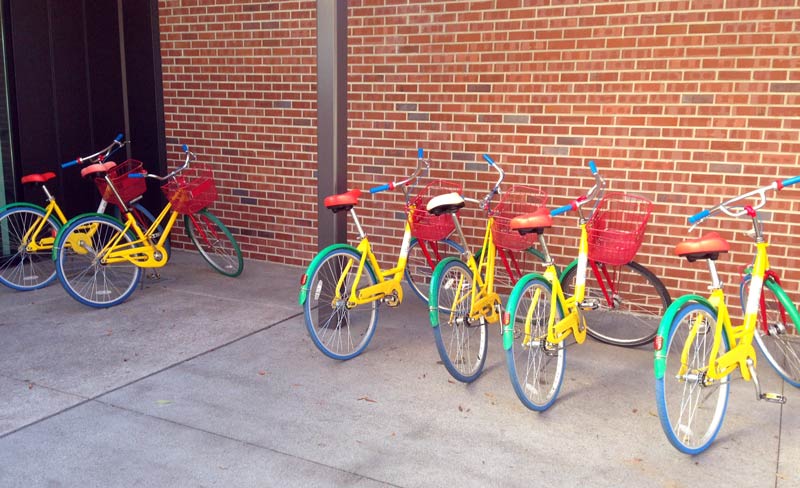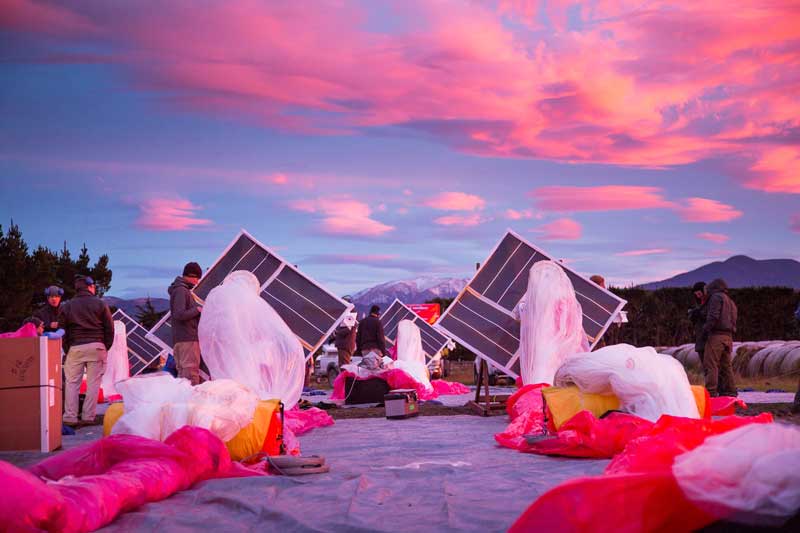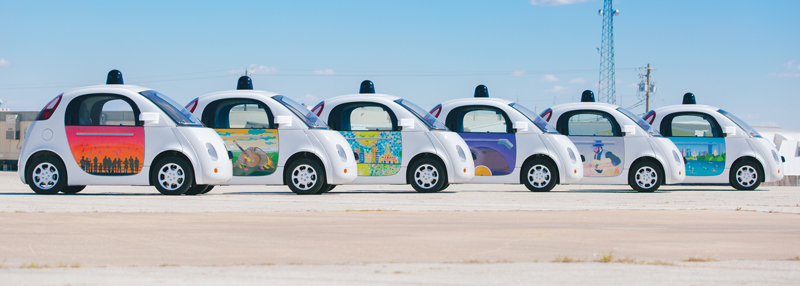Sigma Pi Sigma Physics Congress (PhysCon)
November 3, 2016 to November 5, 2016
San Francisco, CA
Meeting host: By:Lisa Maszkiewicz and Xavier Gutierrez
SPS Chapter:

At PhysCon, students were given the opportunity to visit X, the “moonshot headquarters” of Google. Lots of conference attendees were very excited to visit X in particular to find out how a physics major would fit in at such a company. It is well known that Google hires a lot of computer scientists and engineers. We wanted to find our about opportunities for physics majors. Furthermore, we wanted to learn if X is a place where a physics major would enjoy working and be challenged to use the knowledge we have absorbed in college.
The most impressive thing about Google is that it has leveraged its success as the world’s largest search engine to make a difference in the world with innovative technology. This is the main idea behind the “moonshot” technologies that Google X has made its primary mission to develop. The approach is simple: take a problem affecting millions or even billions of people and see if some breakthrough technology can provide a radical solution. Inspiring and ambitious, yes. But feasible? Perhaps. While many people I’ve spoken with were less than impressed with Google Glass, a “graduate” of X’s facility, many other technologies that X has developed went on to become their own companies or form valuable additions to existing Google products, ranging from big-data-powered sustainable buildings to wearable tech that helps doctors diagnose patients.
One of the moonshot technologies Google presented to us during our visit was Project Loon, a network of LTE-transmitting balloons floating in the stratosphere. Two-thirds of the global population lacks Internet access, so expanding that access has the potential to benefit many human lives as well as drastically increase economic growth.

However, the physics of this problem is far from easy. Describing the atmospheric environment as a “thermodynamic soap opera”, one Loon engineer talked us through the interactions between solar heat and materials, as well as how power dissipation and altitude control are useful tools to keep the internet-transmitting payload within a functional temperature range.Equally dramatic was the atmospheric forecasting technology developed by Google aerospace engineers in order to more reliably provide internet to any given geographic location. Using mountains of weather data and atmospheric modeling software, the weather balloon is able to plan its trajectory towards a location based on the predicted weather currents and other atmospheric behavior. The Mathematica visualization of a time-dependent vector field indicating wind velocity for 3D space captivated my attention for a long time as I paused to consider the sheer number-crunching required to produce such a work of art/science. This is no underwhelming vision of what a moonshot truly is.
Coming in, most people were really excited about Google’s self-driving car, perhaps the company’s most famous product-slash-experiment. One of the main problems X presented to us is how to better resolve an image with low lighting so the cars work safely at night. Glare is also a major problem, which is interesting because in my optics lab we’re studying how polarizers could help solve this problem. On a similar note, the X employees told us a little about the optics of wearable technology and Google Glass.

Moonshot technologies need physicists because we study so many different sorts of phenomena. Computer science students are useful for developing so many of Google’s products because they are largely software-driven, but moonshot technologies such as Google Glass, the self-driving car, Project Loon, and more depend on having sophisticated control over physical phenomenon. A lot of students, especially in physics departments, have been asked, “So what are you going to do with your degree?” As we all know, physics students really can do anything; still, it’s not always easy to find the perfect job. To me, working at Google X seems like a job a physicist would thrive and be productive in because you get to discuss the physics of almost impossible technologies, then make it happen.
The professionals who spoke to use throughout the day had studied a variety of disciplines: computer science, aerodynamics, thermodynamics, telecommunications, and even fashion (yes, really; the tarp designer for Project Loon was a fashion major).
Benedict Mondal, a third year undergraduate student at the University of Maryland, said: “Getting to find out what a company that’s already ahead of the technology game thinks is a potential future technology was insightful. They have such radical ideas; originally I didn’t know why the company was called ‘moonshot’ but by the end of the day it made total sense.”
After getting so many different perspectives and insights, everyone,I’m sure, felt inspired to apply for one of the open jobs our guides mentioned. I wouldn’t be surprised if there will be a spike in the number of physicists working at Google as a result of PhysCon’s tour.